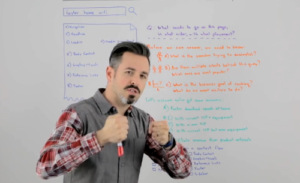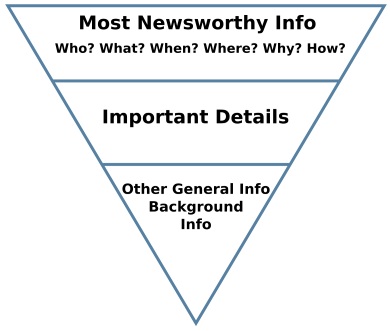Writing content for use in inbound marketing inevitably intersects with the world of SEO. Keyword variations and backlink quality are two obvious points of contact, but many marketers don’t stop to consider that the placement of on-site content, and website page design as a whole, also plays a significant role in their website’s SEO value. It’s called writing with user intent in mind.
In most cases, you’re getting the biggest bang for your SEO buck by providing readers with the answer they want immediately, and then providing details after. Your goal is to understand what brought each reader to your page and then to hammer that value proposition home as early in the page as possible to fulfill that user’s purpose for coming to your page in the first place.
Page Design and Writing Content Based on User Intent
If you live in the world of marketing, you already know the value of page design and the user experience (UX) in SEO. Marketers and web designers spend much time determining how to make the buyer journey comfortable and eventually convert. Yet, not as much time is spent on user intent and its role as a primary driver for SEO-related page design.
Moz discussed this concept at length in a recent Whiteboard Friday post. SEO guru Rand Fishkin used the example of a user seeking information on how to increase home WiFi speed to illustrate the concept of user intent. In a nutshell, he noted that all SEO-oriented page design elements should incorporate the following elements:

Rand Fishkin explaining the SEO and page layout connection—and doing it in style
- Knowledge of what the user is trying to accomplish, or user intent. In our example, the user’s intent is visiting your page to learn how to increase home WiFi speed.
- The intents are behind the search, and the popularity of each intent (primary/secondary intent). Visitors may first be interested in solutions that increase WiFi speed without spending money (primary intent), followed by solutions that increase WiFi speed by switching ISPs (secondary intent), etc.
- The business goals of the page itself, or business intent. E.g., increased affiliate revenue from product referrals.
These intents matter, as they’ll be the deciding in factor in how users relate to your content, and thus, how you structure your page for SEO.
Help Your Viewers and Get to the Point
For maximum SEO value as it pertains to page layout, you’ll find the best results by providing information on the most popular intents early in the article—usually in the first one or two paragraphs.
In brief, get to the point! Regardless of what type of audience you’re addressing, you can’t go wrong by providing the most important information first:
- Many readers don’t spend long on the page, and will “bounce” if they can’t immediately find what they need. You’re helping these viewers by providing the thesis of your argument front and center, making it more likely that their visit will end with a satisfied resolution rather than as another stepping stone in their problem-solving journey.
- The readers who are interested in your content receive the answer straight away and have access to the expertise and details that provide additional context. These readers are already qualified, so they won’t mind spending some time and exploring the extended resources you’ve provided.
What’s the reader’s intent?
To return to our WiFi example, if your research indicates that the majority of viewers visiting your page have a primary intent of increasing home WiFi speed without spending any money, you can serve these readers by providing a bulleted list near the top of the page that explains each solution (move the router, block piggybacking IPs, and so on). Further down the page, you can address the other intents, such as different ISP solutions. Combined with a robust on-page SEO campaign that aggregates metadata and images into rich snippets, this approach can be a powerful way to make your page a must-visit resource.

Incidentally, this style of providing the most relevant information first has its roots in old-fashioned journalism. The inverted pyramid has been considered a best practice in reporting for decades.
This explains why written CTAs placed near the top of the page are so much more effective than those placed at the bottom. While bottom CTAs wrap things up nicely, the ones at the top clearly define a reader’s next step—especially useful for those who already know what they want. Include these at the top of the page to address all readers and increase your capture rate.
Determine Page Flow from Audience Intent
Page design for optimal SEO is a process that relies on an understanding of your market, the intents that drove people to your site, and how their information-seeking behaviors affect their online behaviors:
- Learn the primary goals of your audience and how you leverage your own knowledge to provide solutions
- Include the main point of your article in the first two paragraphs
- Provide supporting details and context as needed
By following this strategy, you’ll provide viewers with a browsing experience that naturally supports SEO. Because really, SEO is just a game of who can best cater to a market—and the highest ranked pages are always designed with their users first.



